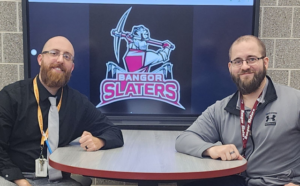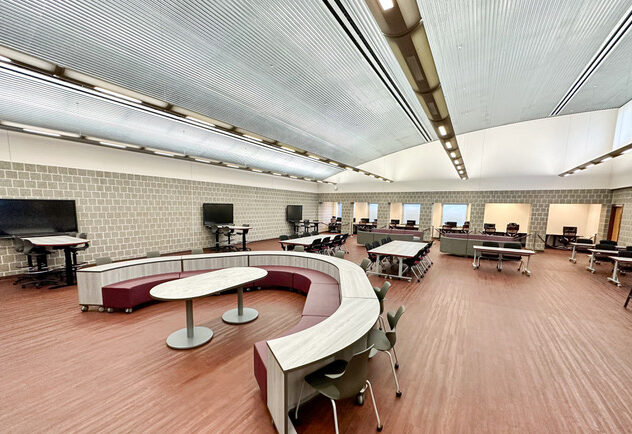
Esports, or competitive video gaming, has really taken off over the last few years. The trend has caught the attention of schools like ours, which are always looking for new ways to engage students that we may not be able to reach with more traditional educational and extracurricular programs. Considering that more than 60% of esports fans are ages 13 to 26 — within the age range of the typical secondary or post-secondary student — exploring this opportunity made perfect sense for us.
We found a couple of different esports leagues, conducted a brief feasibility study, and looked at how other high schools were running their programs. We also started talking to students who enjoyed playing video games about their potential participation, and the interest was high.
Steps to creating an esports space
From there, we moved quickly to figure out which existing resources we could use to create a program that would reach as many people as possible. We advise six additional steps to design an esports program and create the perfect space for it.
- Think outside of your own school. We signed up with a league for the inaugural season of the Pennsylvania Interscholastic Esports Association and used that as a launchpad for our program. About 10 or so high schools were playing at the time, and today about 80 schools are participating in Pennsylvania.
- Develop a code of conduct. Early on, we laid out very strict expectations for students who would participate in its esports program. This is a school-sanctioned event where expectations would be on par with those of our athletics department. That meant putting a code of conduct in place and also determining eligibility.
- Carve out an area just for esports. We started out in a classroom and then moved to another classroom. Then we relocated into the library, which was subsequently converted into our media center. We have about 15 to 20 kids in a space that’s working out well because it includes a dedicated esports playing area in a relatively high-traffic area of the school.
- Make the space as dynamic as possible. Working with MiEN, we were able to build out a dynamic, versatile space for students to participate in esports and room for spectators to watch. The media center also includes a technology workstation area to triage and fix students’ and teachers’ 1-to-1 devices. We have student workers through our diversified occupations program who also take part in that. So, basically, there’s esports on one side and our own in-house Geek Squad on the other.
- Use it for different purposes. We really like the multipurpose nature of the space, where it’s very easy to switch between using a computer station and playing a game. Teachers can book the space for any duration of time throughout the day to accelerate any type of engagement or instruction. Chairs can easily be wheeled over to large smart screen monitors, where everyone can view overhead heat maps and view each other’s progress in the games.
- Make it a spectator sport. Everyone can see what’s going on in the space, where we use velvet ropes to block off the area where the students participate in esports. We wanted it to be a place where staff, students and community members could come to sit and watch, just as if they were at one of our basketball or football games.
Build today for the future
When we were building out our esports program and finding the right place for it, we thought not only about today but also about the people who are coming after us. In education, a rising tide definitely floats all boats. Having this great facility enables other people to come in and use it. Just like we repurposed laptops after the return from remote learning, we’ll be able to use our media center for other purposes in the future.
For example, we offer a game design class, and we use the powerful laptops we already have in our esports space to teach that class, which utilizes modeling software. This is just one of many ways that we can dual-purpose various resources and programs that operate as an evergreen environment to serve the community for as long as possible.
Andrew Krohn is principal, and Dino Perelli is an English language arts teacher and esports coordinator at Bangor Area High School in Bangor, Pa. The school worked with MiEN to design its esports space.
Opinions expressed by SmartBrief contributors are their own.
_________________________
Subscribe to SmartBrief’s FREE email newsletter to see the latest hot topics on edtech. It’s among SmartBrief’s more than 250 industry-focused newsletters.
